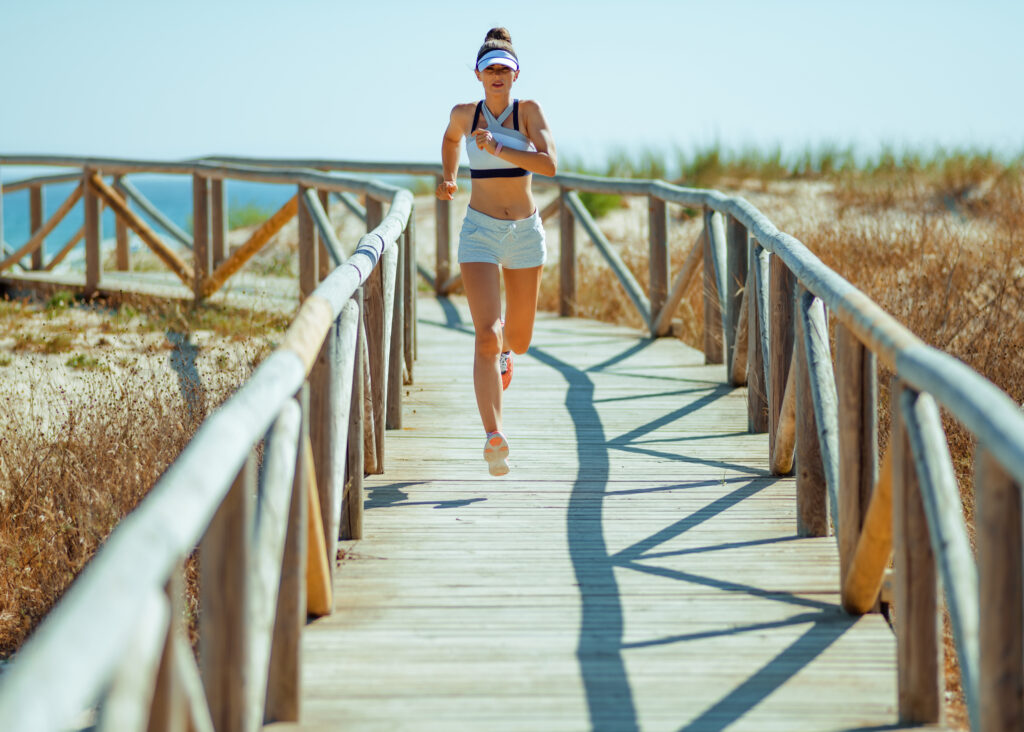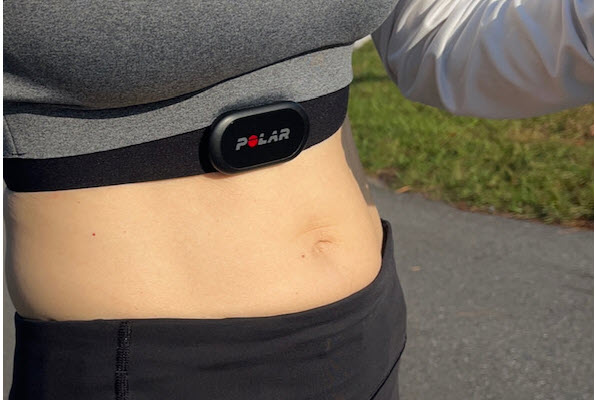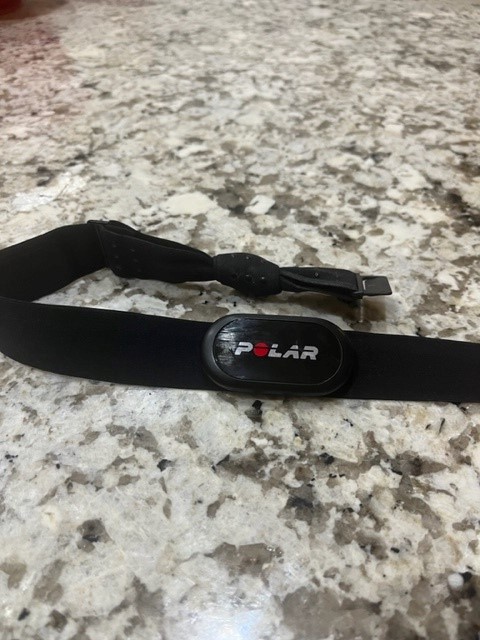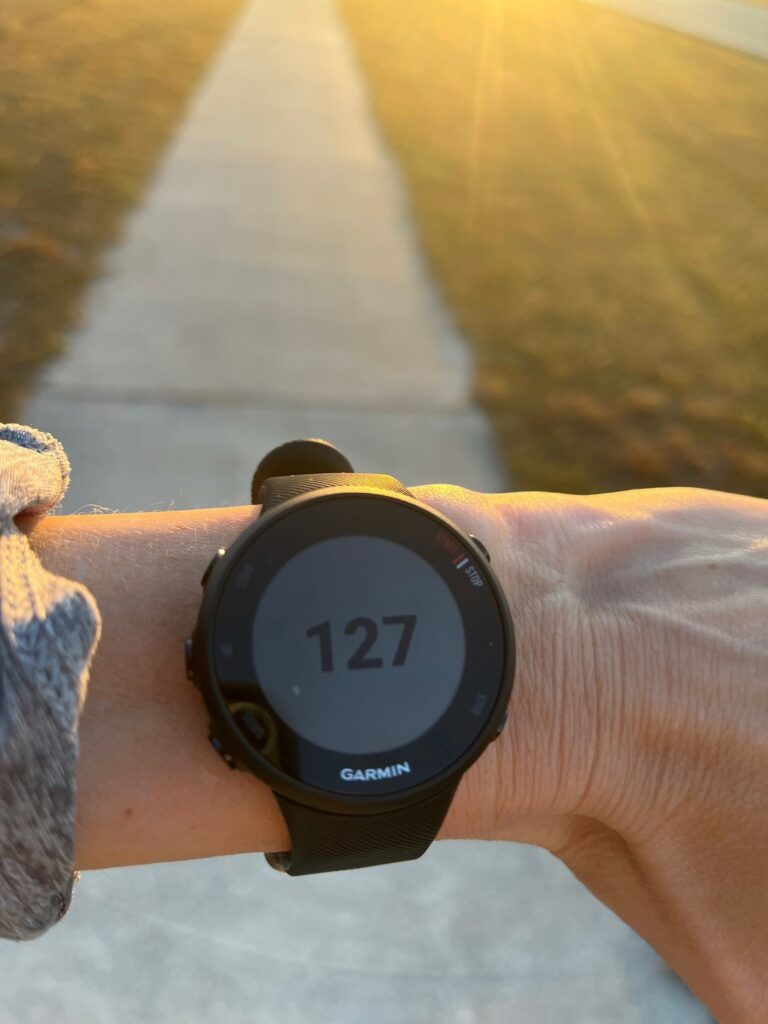
Running is hard and running in the heat with a heart rate monitor is even harder. Running with the right heart rate monitor can be a bit challenging, but I’ve recently found the best one.
In general, the best heart rate monitor for running in the heat are wrist-worn monitors with buttons. Wrist monitors with touchscreens are difficult to operate and often fail to detect actions with wet hands. Chest monitors are extremely accurate but tend to slip down with excessive sweat and can cause chaffing on longer runs.
Running in hot weather presents challenges when using a heart rate monitor. You are already uncomfortable, and the heat can really tire you out. Using the most convenient and comfortable heart rate monitor becomes extremely important. It’s easy to give up on the heart rate monitor training if you aren’t prepared for the challenges. If you have been frustrated or are looking to buy a new one, you will want to keep the following tips in mind.
Chest heart rate monitors in the heat: slipping and rubbing in the heat

Chest heart rate monitors are the most accurate and affordable monitors on the market. They are up to 99% percent accurate and consistently rank as one of the best monitors for the value. You can’t go wrong with a chest monitor, except maybe when it comes to the heat.
I’ve had a chest heart rate monitor for a few years now and live in sunny southern Florida where I can run year-round. I typically run with temperatures in the 70s first thing in the morning with 85-90% humidity, but my long runs tend to be in the 80s (27-29 Celsius) by the time I’m done.
Needless to say, I have plenty of experience running with a chest monitor in the heat. For shorter runs, I typically don’t mind my chest heart rate monitor in the heat. It is the most accurate, so I prefer to wear it when it won’t be in the way.
There are two common issues I find with wearing a chest monitor in the heat, slipping and rubbing. Both issues are uncomfortable, distracting, and annoying. There are things you can do to avoid these issues, but they take a little extra effort and forethought.
Slipping issues with chest monitors
Once you are all hot and sweaty from running in the heat, I find my chest monitor starts to slip. A little slipping is okay as I’ve found the monitor will still be accurate (I wear a wrist one too). However, if it falls around your waist as mine has on occasion, it won’t be working at all.
Most monitors have silicone dots to help prevent slippage. When you are sweating excessively, they may still fail to keep the monitor in place. Some, like me, have also found the smallest strap is still not tight enough on hard runs.
Solution: Tightening up the strap can help reduce the slipping, but a tighter fit will be more uncomfortable. You can get a tighter fit by putting a knot in the strap, but this will reduce the effectiveness of the silicone dots.

Chaffing of chest monitors in heat
I have been rubbed raw on more than one occasion with my chest strap on my long runs. The worst part is that you don’t know it’s happening until it’s too late and it becomes painful.
I usually don’t have a problem with chaffing on shorter runs. It tends to be the longer runs if I have the chest strap very tight or positioned under my bra band which I do to prevent slipping.
Solution: Apply an anti-chaffing product to prone areas before your run. I usually just use petroleum jelly. The hard part is remembering to put it on.
See my article here for more on solutions for common issues with chest monitors.
Wrist-worn touchscreen monitors: fail to detect actions with sweat
I ran for many years with a touchscreen wrist-worn heart rate monitor. Overall, I loved the convenience and low profile as I have small wrists and was not used to wearing a watch.
The main issue I found with running in the heat was the touchscreen would fail to detect my actions with hot sweaty fingers. This was really frustrating, especially on long runs.
When you are hot and tired, trying to wipe your fingers dry to use your touchscreen can be nearly impossible! Long runs in Florida’s summer heat basically mean there isn’t a dry piece of clothing on you.
I used to use a Fitbit with a heart rate sensor, and it did work well as an overall fitness activity tracker. After repeatedly having issues with the touchscreen in the heat I decided this kind were not for me when running.
Solution: Carry a sweat-wicking cloth in a waterproof pocket to dry the screen and your hands in the heat.
Wrist-worn monitors with buttons: durable and dependable

Wearing a wrist monitor with solid buttons you can depress is the best option in the heat. Sweaty hands won’t affect the functioning and it’s the least uncomfortable and frustrating.
Although wrist-worn monitors are not as accurate as chest monitors, there are many brands that are still highly accurate. I recommend doing your research ahead of time and look for accuracy ratings.
I have personally found the Garmin watches with the heart rate sensor to be the best for running, especially in the heat. They have large screens, easy-to-depress buttons on the side, and are designed with runners in mind.
Garmin watches can be pricey, but they do have some lower-end models with heart rate monitors. The model I use is the Garmin 45s which was slightly more than a Fitbit with a heart rate sensor or a chest strap.
Having used a Fitbit and chest monitor for several years, I am SO happy with my Garmin. It is the best heart rate monitor I’ve used for running and only wish I would have invested in a Garmin years ago.
See the article here for more information on different heart rate monitors and a link to the Garmin 45s.
Key Takeaways
Almost all heart rate monitors for exercise are designed to be either waterproof or water-resistant, but that doesn’t mean all monitors are good when running in the heat. Chest monitors and touchscreens have been less than stellar from my experience running for years in hot and humid Florida.
A wrist-worn heart rate monitor with a large display and easy-to-use side buttons is by far the best monitor to wear. While it does come down to personal preference, I’m glad I finally invested in a Garmin running watch with a heart rate monitor as it makes a huge difference in my runs for overall accuracy and comfort. I hope you can learn from my experience as cost and accuracy don’t always correlate to the best monitor for the heat.